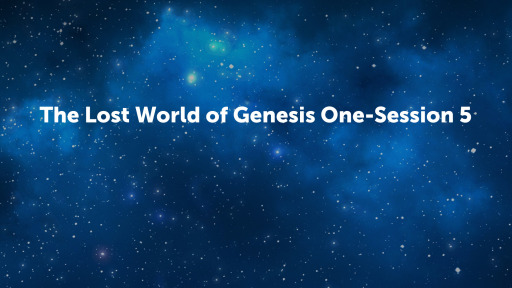The Lost World of Genesis One-Session 5

Days One to Three in Establish Functions
Day One
3 And God said, “Let there be light,” and there was light. 4 And God saw that the light was good. And God separated the light from the darkness. 5 God called the light Day, and the darkness he called Night. And there was evening and there was morning, the first day.
God called the light “day” and the darkness he called “night.” And there was evening and there was morning—the first day. (niv)
metonymy
We are compelled by the demands of verses 4 and 5 to translate verse 3 as “God said, ‘Let there be a period of light.’ ”
Day Two
6 And God said, “Let there be an expanse in the midst of the waters, and let it separate the waters from the waters.” 7 And God made the expanse and separated the waters that were under the expanse from the waters that were above the expanse. And it was so. 8 And God called the expanse Heaven. And there was evening and there was morning, the second day.
Day Three
9 And God said, “Let the waters under the heavens be gathered together into one place, and let the dry land appear.” And it was so. 10 God called the dry land Earth, and the waters that were gathered together he called Seas. And God saw that it was good.
11 And God said, “Let the earth sprout vegetation, plants yielding seed, and fruit trees bearing fruit in which is their seed, each according to its kind, on the earth.” And it was so. 12 The earth brought forth vegetation, plants yielding seed according to their own kinds, and trees bearing fruit in which is their seed, each according to its kind. And God saw that it was good. 13 And there was evening and there was morning, the third day.
He created day, month, and year through the commands of the lord of command.
He created summer and winter through the rising and setting of Sothis.
He created food before those who are alive, the wonder of the fields.
• Lines 38–40: night and day
• Lines 47–52: creation of the clouds, wind, rain and fog
• Lines 53–58: harnessing of the waters of Tiamat for the purpose of providing the basis of agriculture, piling up of dirt, releasing the Tigris and Euphrates, and digging holes to manage the catchwater
22 While the earth remains, seedtime and harvest, cold and heat, summer and winter, day and night, shall not cease.”